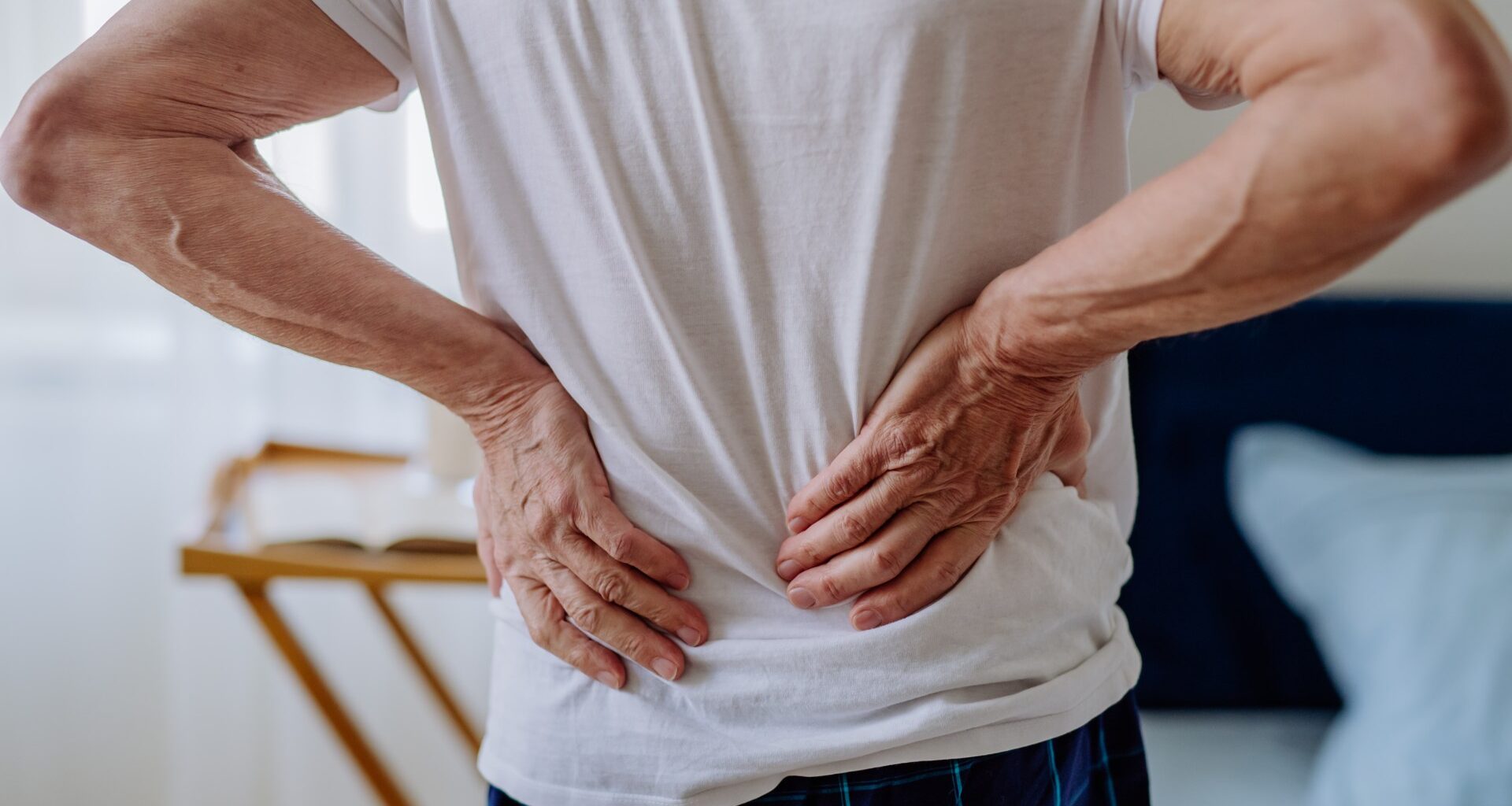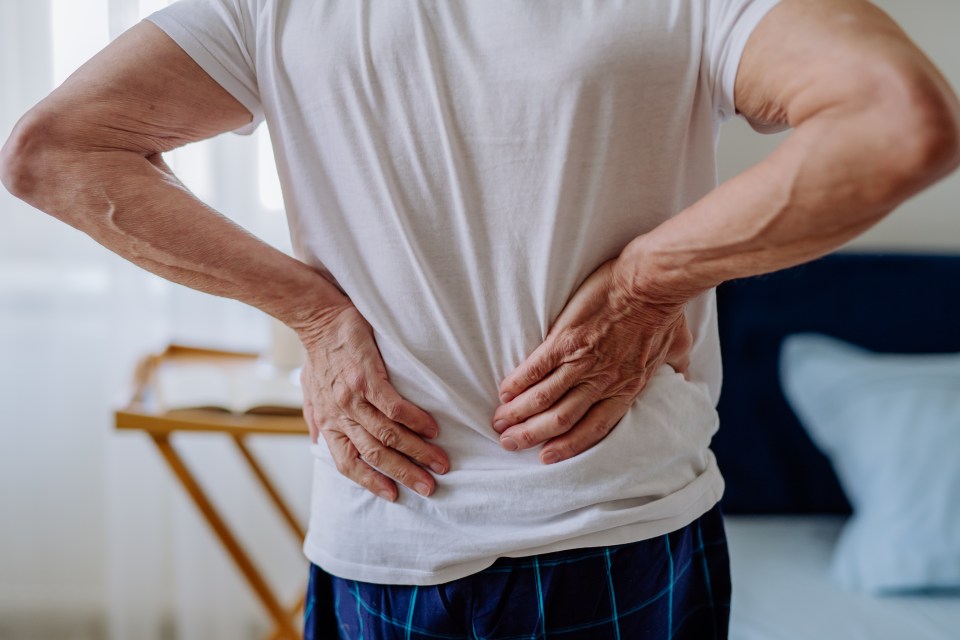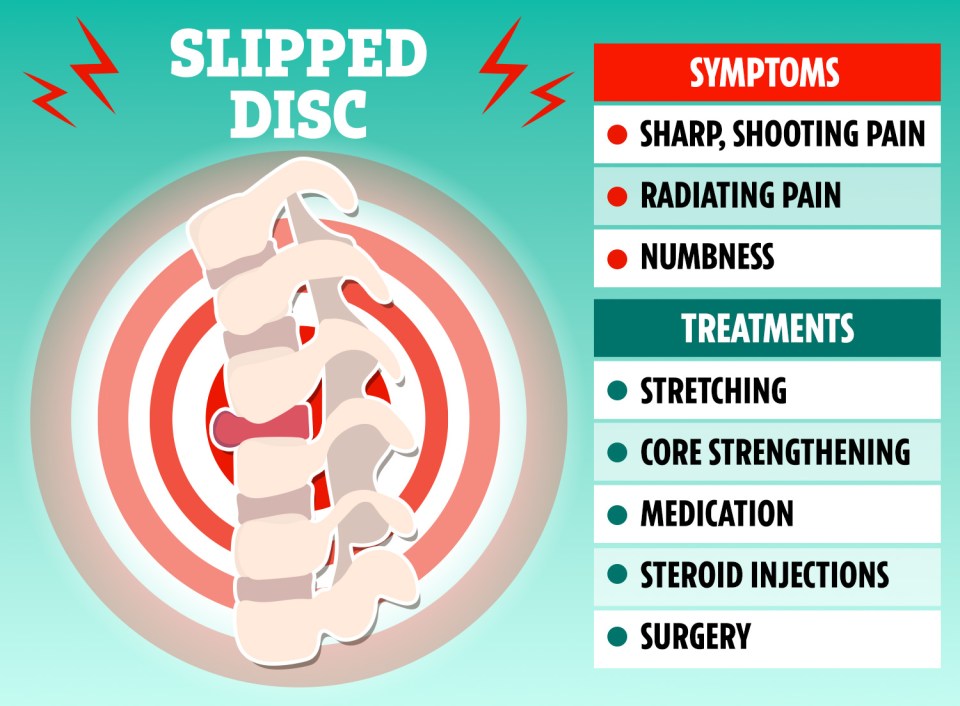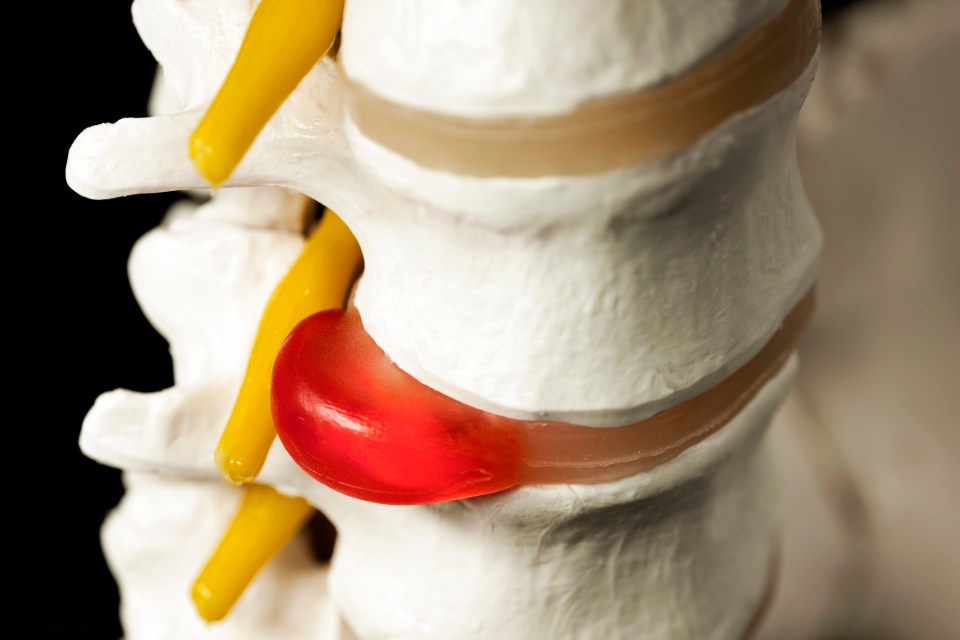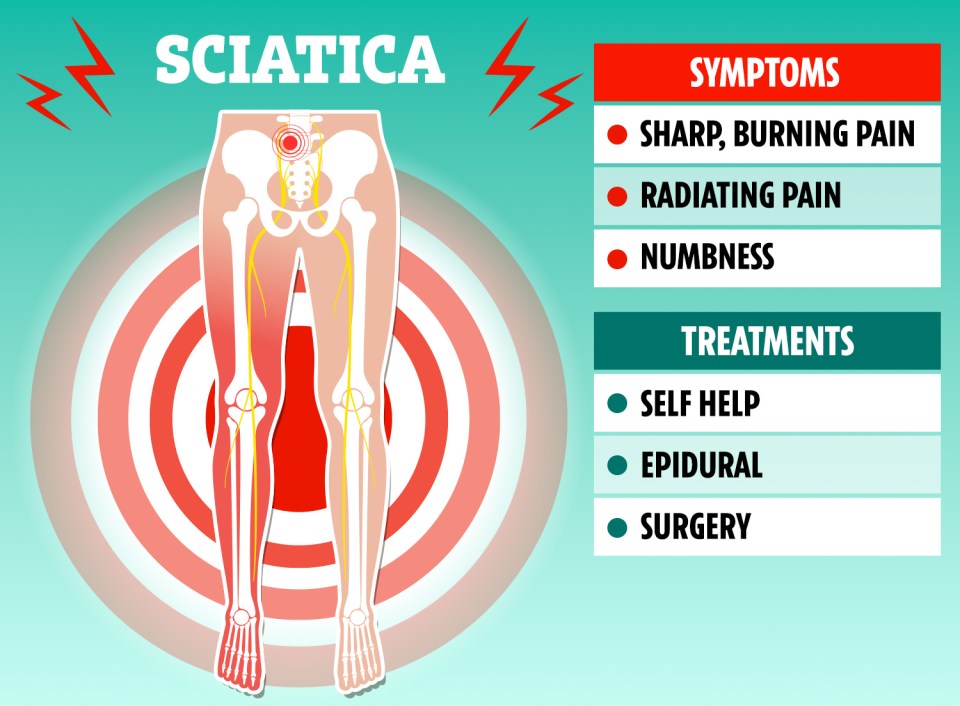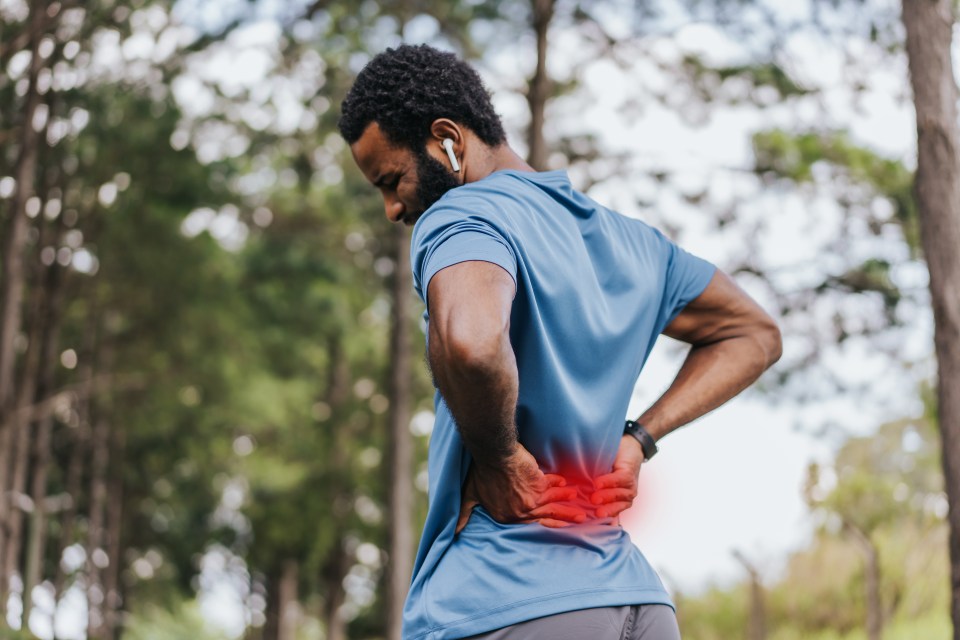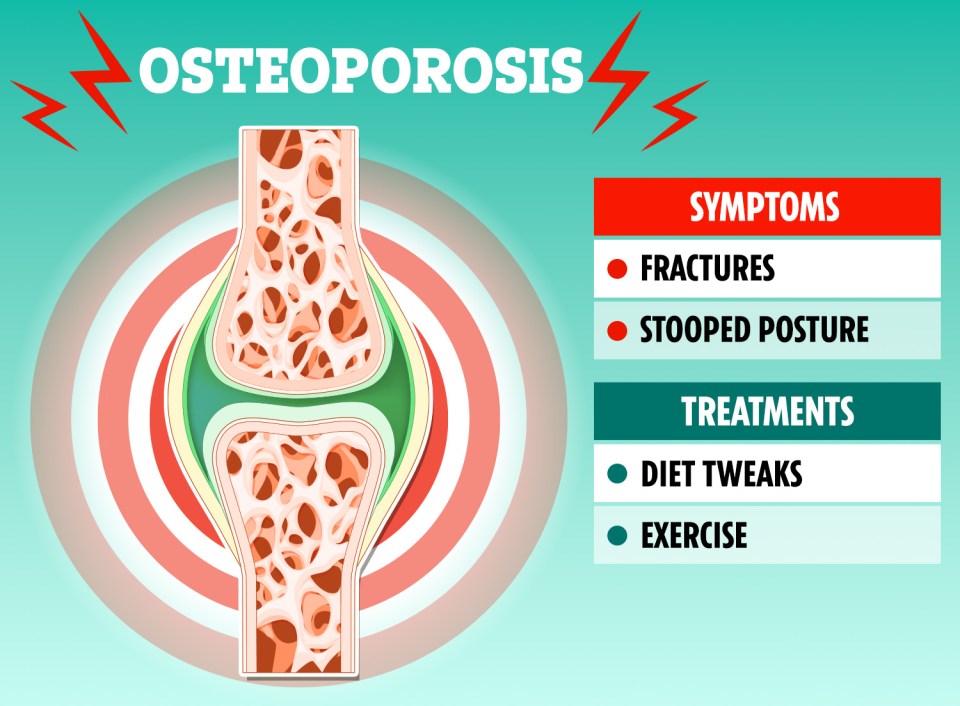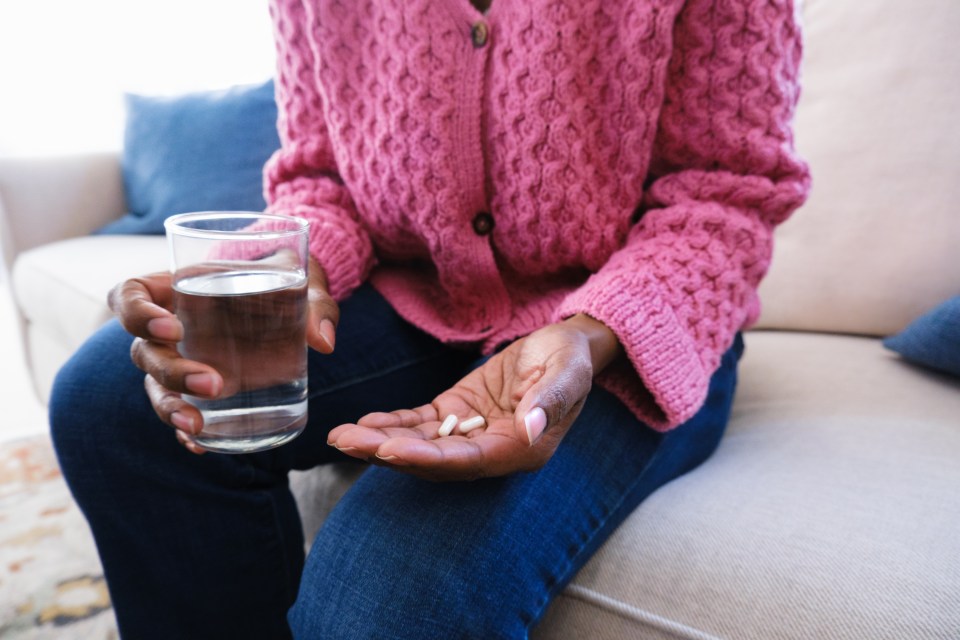WE’RE living through a back pain epidemic.
It affects 49million people in the UK and 619million globally, and it can wreak havoc on our everyday lives.
10
Millions of us are plagued by agonising back pain – but did you know there are lots of types, each requiring different treatmentCredit: Getty
From sharp stabs to dull aches and even numbness, it can be crippling for some.
“This pain can be debilitating, affecting general day to day movement, stopping people from being able to work and even sleep,” physiotherapist and musculoskeletal specialist Clara Kervyn tells Sun Health.
Back pain accounts for more than 12million days off work every year, and it costs the NHS nearly £5billion annually.
But not all back pain is the same, and some types require very different treatment to others.
So what’s the reason for yours?
From slouching at your desk to arthritis, experts share the potential causes – as well as treatments to help you feel more comfortable…
10
A herniated disc, known to most of us as a slipped disc, occurs when the soft, gel-like tissue found between the vertebrae in your spine pushes outwards.
There are about five to 20 cases per 1,000 adults.
“It occurs most often in the lumbar spine (lower back) but can affect the cervical spine (neck) and in rare instances, the thoracic spine (central back),” says Mr Gordan Grahovac, consultant neurosurgeon at Nuffield Health Tunbridge Wells Hospital.
The most common causes include age-related degeneration, where the disc dries out and weakens, improper lifting technique with heavy weights, sudden trauma or injury and/or a sedentary lifestyle. Genetics can also play a role.
A sharp, burning or shooting pain may be felt down one leg, shoulder, arm, hand or around the chest or abdomen, depending on where the herniated disc is down your spine.
Mr Grahovac says that most of the time, herniated discs do not require surgery and improve over weeks to months.
But do visit your GP, who can advise you on the next steps.
If non surgical treatments – such as stretching, core strengthening and medication like ibuprofen – don’t work within six to 12 weeks, surgery may be an option.
10
A slipped disc can cause sharp, shooting, radiating pain and numbnessCredit: Getty
“The most common is a microdiscectomy,” says Mr Grahovac.
“This involves the removal of the herniated portion through a small incision on the back.”
Full recovery from surgery can take up to 12 weeks.
Mr Grahovac says: “Seek immediate help and call 999 if you experience a loss of bladder or bowel control, leg weakness which gets worse and/or a severe pain that’s not responding to treatment.”
10
More than 10million people in the UK have arthritis.
Spinal arthritis is a degenerative disease affecting the facet joints, found on the back of each vertebrae in the spine, and the intervertebral discs.
“It’s most common in the mobile spine, including the lower back and neck,” says Mr Grahovac.
“Early signs can include mild back or neck stiffness, especially in the morning; intermittent discomfort that worsens with activity; a ‘grinding’ or popping sensation when you move; and fatigue.”
Later stage symptoms might include nerve impingement, which can cause numbness, tingling or weakness, and/or a decreased range of motion of your lumbar spine or neck.
Your GP will be able to diagnose spinal arthritis by assessing your range of motion, any family history, as well as any tenderness over the affected area.
Both pulled and torn muscles may lead to bruising, swelling and muscle spasms. You may feel a ‘pop’ or a tear
Elyn MarwickPersonal trainer
“Your doctor may even refer you to a musculoskeletal physiotherapist who can organise further investigations,” Mr Grahovac says.
“An X-ray could point out any narrowing between joints, while an MRI scan can pick up any nerve involvement or degeneration of spinal discs.”
There’s no cure for arthritis, however symptoms can be managed.
“Losing weight can reduce stress on the joints,” Mr Grahovac says.
“Try regular low-impact exercise such as swimming, walking and yoga, as well as weight-bearing exercise to increase muscle strength.
“When you experience a flare up, heat or ice therapy can help to ease stiffness and pain, and ibuprofen and naproxen can help to reduce pain and inflammation.
“Surgery is rare and typically reserved for severe, disabling cases with nerve root or cord compression.”
10
Sciatica is not actually a condition itself. Instead, it’s a symptom of the sciatic nerve – the largest nerve in your body – being irritated or compressed.
“It typically results from issues in the lower spine,” says Mr Grahovac. “The most common cause is a herniated disc.
“Sciatic pain is a sharp, burning, shooting, or electric-like pain.
“It starts in the lower back or bum and radiates down one leg. It can go as far down as your foot.
“It can also be accompanied by numbness, a pins-and-needles-like tingling or muscle weakness in the leg or foot, and it might become worse when you’re sitting, coughing or sneezing.”
Between 13 and 40 per cent of people experience sciatica at some point in their life.
There are a few temporary self-help treatments you can try.
“For the first 24 to 48 hours, try cold packs and then turn to heat therapy,” says Mr Grahovac.
“Ibuprofen and naproxen can help, as can one to two days of rest – but avoid prolonged bed rest.
“Short, frequent walks are better than being sedentary.”
What the location of your back pain really means

BACK pain is a common affliction that affects millions of Brits.
Aches and pains might feel like an everyday part of life, but where they occur might indicate a more serious problem that requires attention.
The location of your back pain could indicate you are suffering anything from organ problems to pinched nerves.
Abbas Kanani, pharmacist at Online Pharmacy Chemist Click, said there are specific ways to treat each type of back pain, and some may need urgent attention.
He said: “You should also ask for an urgent GP appointment if your back pain is accompanied with a high temperature or if you’ve lost weight without trying to.
“You should also ask for one if there’s a lump or swelling in your back or your back has changed shape.
“If the pain does not improve after resting or is worse at night the pain is made worse when sneezing, coughing or pooing, you should also contact them.
“Ask for an urgent appointment if the pain is coming from the top of your back — between your shoulders — rather than your lower back.”
Sides – possible causes include kidney problems, pancreatitis, bowel inflammation, womb contractionSpine – possible causes include degenerative disc disease, spinal stenosis, arthritisLower back – possible causes include muscle injury, spasms, herniated discs Upper back – possible causes include pinched nerves Neck – possible causes include misalignment, low flexibility
Try gently stretching the hamstrings and piriformis – a small muscle near your hip joint.
A seated forward fold can help your hamstrings. Sit on the ground with your legs straight and reach for your toes.
For your piriformis, try a figure-four stretch. Lie down and cross one ankle over the opposite knee before pulling both legs in towards your chest.
A physio, either private or referred by your NHS GP, can guide you through other exercises that help to relieve pressure on your sciatic nerve.
Core strengthening exercises also help to stabilise the spine.
If after four to six weeks there’s no improvement, visit your GP. You may be eligible for an epidural steroid injection.
“This is usually effective for rapid relief as it targets inflammation at the nerve root,” Mr Grahovac says.
Permanent solutions to your sciatica will depend on the underlying cause; your GP can advise you.
“Surgery has high success rates for the right candidates, especially if there’s leg weakness or a disabling pain,” says Mr Grahovac.
10
Muscle strains occur when a muscle or tendon is stretched or torn.
“They commonly happen in everyday life, when bending over, twisting during household chores or picking up bags of shopping,” says personal trainer Elyn Marwick.
Overtraining without resting enough can also cause a strain. So can undertraining.
“Muscles that are inflexible or without strength due to lack of use can lead to strained muscles on ordinary use like walking,” adds Elyn.
“Both pulled and torn muscles may lead to bruising, swelling and muscle spasms.
“You may also feel a ‘pop’ or a tear during the injury and tenderness. Even at rest the muscle may feel painful.”
10
The PRICE technique can help treat muscle strainsCredit: Getty
Elyn recommends the PRICE technique – protect, rest, ice, compress, elevate, which can help relieve pain and inflammation during the first days of recovery.
You can also try a product like Deep Freeze Cold Gel (£4.25, Boots).
“It works by reducing blood flow to a strained muscle, significantly reducing inflammation and swelling,” says Elyn.
As the muscle starts to feel better, it’s important to move it.
“A physiotherapist can offer help and advice. You can either self-refer or pay to see one privately,” says Clara.
“Consult your GP if the pain feels severe, lasts for more than a few days, worsens with time or if you felt a pop at the time of the injury.”
Call 111 if you also have a very high temperature, feel hot and shivery, or if you develop numbness, tingling, sudden weakness or difficulty controlling certain muscles.
10
Osteoporosis, a condition where bones become weaker and more brittle, can lead to vertebral compression fractures, particularly in the spine, which may result in sudden or persistent back pain.
“These fractures can occur from minor falls, lifting or even coughing or sneezing,” says Clara.
Osteoporosis, the most common type of arthritis affecting an estimated 8.5million people, often progresses silently and may go undiagnosed until a fracture occurs.
“Bone density testing is key for early detection, especially if you’re at higher risk, such as postmenopausal women or those with a family history of the condition,” says Clara.
Sitting slouched at a desk or looking down at a screen for extended periods may lead to tension in the upper and lower back, neck and shoulders
Clara KervynPhysiotherapist
Although osteoporosis can’t be fully reversed, you can slow its progression, reducing the risk of fractures.
Clara recommends increasing your intake of calcium, magnesium, vitamin D, vitamin C and trace minerals such as copper, zinc and manganese, which can all support bone health.
Try Holland & Barrett ABC to Z Multivitamins & Minerals tablets (£4.75), which contain all of these nutrients.
Resistance-based exercises are also one of the best things you can do to help improve bone density. General movement, such as walking, will help too.
Clara also suggests reducing alcohol and quitting smoking.
10
Bad posture can place a lot of strain on muscles and soft tissues.
“Sitting slouched at a desk or looking down at a screen for extended periods may lead to tension in the upper and lower back, neck and shoulders,” says Clara.
“Leaning on one leg or having rounded shoulders can cause imbalances over time that contribute to discomfort.
“When sitting, use a chair with good back support to maintain the natural curve of your lower back.
“Sit upright and avoid slouching or leaning to one side.
“Keep feet flat on the floor and elbows at a 90-degree angle with your forearms parallel to the floor.”
10
Take a multivitamin to look after your bone healthCredit: Getty
Get up and move around every hour and do some simple stretches to avoid stiffness and keep joints mobile.
Try Deep Heat Muscle Massage Roll-on Lotion (£5.85, Tesco) which helps to ease tight muscles.
Clara adds: “When standing, stand tall with shoulders back.
“Avoid slouching; instead, engage your core, gently drawing in your lower abdomen.
“Keep your feet shoulder-width apart and weight balanced on the balls of your feet, with knees slightly bent.”
I was left on the brink of total paralysis after doctors dismissed by back pain as ‘anxiety’
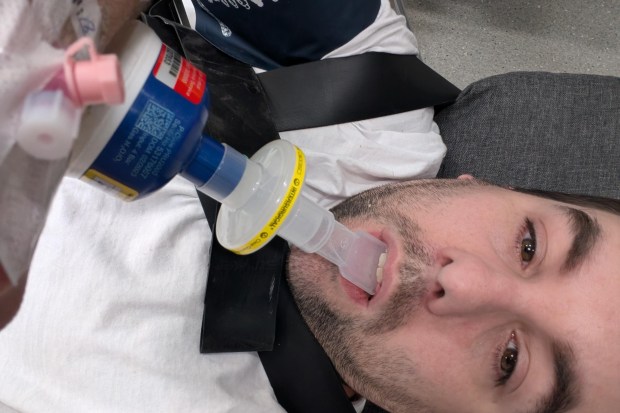
By Katrina Turrill, Health News Editor
A DAD-of-three was left fearing he’d never walk again after doctors repeatedly dismissed his excruciating back pain as anxiety.
Mark Doe, 36, from Swindon, endured months of agony, pins and needles, and leg weakness, initially attributed to a small disc bulge.
Despite his worsening symptoms, including needing a walking aid, a neurologist told him his issues were “all my anxiety” and upped his mental health medication without further scans.
Mark felt “really let down and lost,” believing he “just had to put up with the symptoms.”
The terrifying truth emerged three months later when a “pop” in his back left him unable to move, with radiating pain and a loss of bladder function.
He recalled: “I couldn’t move with the immense pain. I would scream out every time I moved.”
At the hospital, doctors suspected Cauda Equina Syndrome, a condition where nerves at the base of the spinal cord are compressed, which can lead to paralysis.
An emergency MRI revealed the small bulge had “grown much bigger and was crushing my nerves.” Mark was rushed into nearly five hours of surgery.
His recovery has been “very difficult”. He was bed-bound for six weeks and unable to hold his five-month-old daughter.
He still suffers pain and may need further surgery, but he emphasises: “If the doctor I had for the second appointment had sent me for a scan, maybe this could have been prevented or not been so bad.”
Mark added: “Don’t give up, keep on at doctors, don’t do it alone.”

